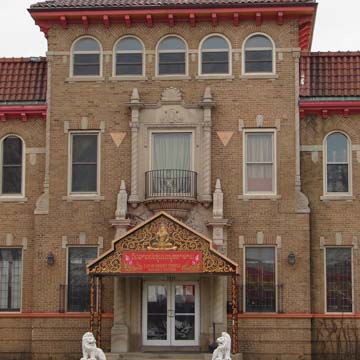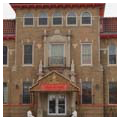This eclectic design incorporates certain Spanish Colonial architectural details, including its scrolled gables, red tile roof, and arched, double-door entrance framed by rope-twisted columns and inverted scrolled console brackets. A second elaborate stone surround frames the window above. The lodge housed a chapter of the Knights of Pythias, once the third-largest fraternal organization in America. Here, the Pythians socialized, practiced fraternal rituals, and planned charitable activities. Life insurance benefits available to club members made it particularly attractive to working-class men. As was the case with many fraternal organizations nationwide, Knights of Pythias membership declined during the Great Depression, when poverty strained resources and government assumed welfare responsibilities. These Pythians rented their hall out to labor unions in the 1950s, but financial shortfalls forced the lodge to disband in 1980.
You are here
Pythian Castle Lodge
If SAH Archipedia has been useful to you, please consider supporting it.
SAH Archipedia tells the story of the United States through its buildings, landscapes, and cities. This freely available resource empowers the public with authoritative knowledge that deepens their understanding and appreciation of the built environment. But the Society of Architectural Historians, which created SAH Archipedia with University of Virginia Press, needs your support to maintain the high-caliber research, writing, photography, cartography, editing, design, and programming that make SAH Archipedia a trusted online resource available to all who value the history of place, heritage tourism, and learning.


















